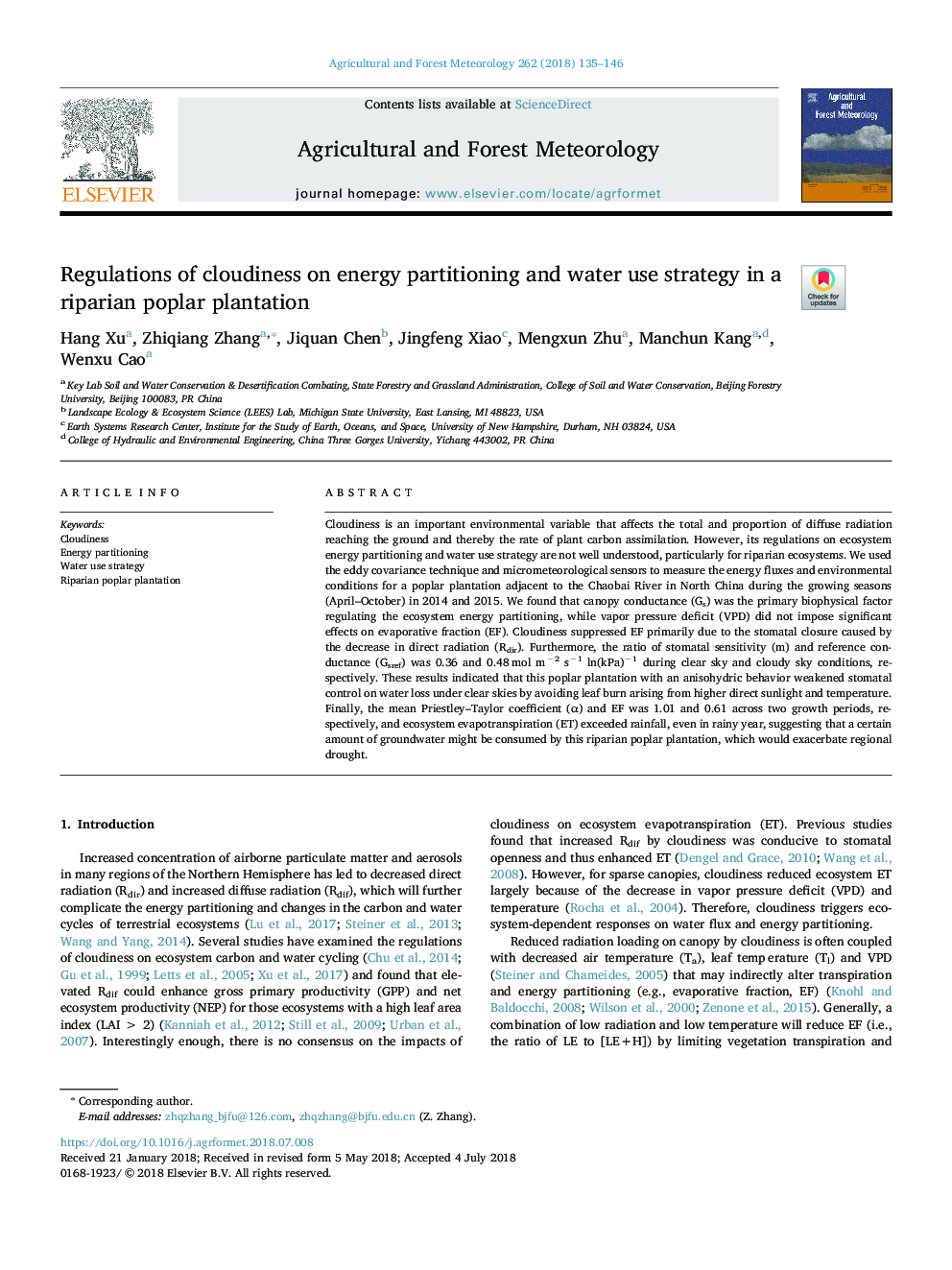| Article ID | Journal | Published Year | Pages | File Type |
|---|---|---|---|---|
| 6536572 | Agricultural and Forest Meteorology | 2018 | 12 Pages |
Abstract
Cloudiness is an important environmental variable that affects the total and proportion of diffuse radiation reaching the ground and thereby the rate of plant carbon assimilation. However, its regulations on ecosystem energy partitioning and water use strategy are not well understood, particularly for riparian ecosystems. We used the eddy covariance technique and micrometeorological sensors to measure the energy fluxes and environmental conditions for a poplar plantation adjacent to the Chaobai River in North China during the growing seasons (April-October) in 2014 and 2015. We found that canopy conductance (Gs) was the primary biophysical factor regulating the ecosystem energy partitioning, while vapor pressure deficit (VPD) did not impose significant effects on evaporative fraction (EF). Cloudiness suppressed EF primarily due to the stomatal closure caused by the decrease in direct radiation (Rdir). Furthermore, the ratio of stomatal sensitivity (m) and reference conductance (Gsref) was 0.36 and 0.48â¯mol mâ2 sâ1 ln(kPa)â1 during clear sky and cloudy sky conditions, respectively. These results indicated that this poplar plantation with an anisohydric behavior weakened stomatal control on water loss under clear skies by avoiding leaf burn arising from higher direct sunlight and temperature. Finally, the mean Priestley-Taylor coefficient (α) and EF was 1.01 and 0.61 across two growth periods, respectively, and ecosystem evapotranspiration (ET) exceeded rainfall, even in rainy year, suggesting that a certain amount of groundwater might be consumed by this riparian poplar plantation, which would exacerbate regional drought.
Related Topics
Physical Sciences and Engineering
Earth and Planetary Sciences
Atmospheric Science
Authors
Hang Xu, Zhiqiang Zhang, Jiquan Chen, Jingfeng Xiao, Mengxun Zhu, Manchun Kang, Wenxu Cao,
